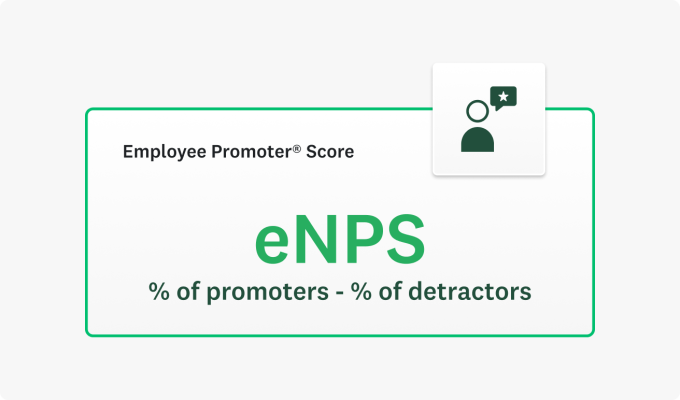Employee satisfaction: Why it matters and how to improve it
Learn how to measure and boost employee satisfaction to create a workplace that people love.

Employee satisfaction is the foundation of any successful business. When employees feel valued and motivated, they’re happier and more productive. Conversely, companies may encounter significant challenges, including communication breakdowns, decreased morale and high turnover rates, when employees don’t feel valued and motivated.
Tracking and improving employee satisfaction are two essential pillars of any business strategy. But they’re often overlooked. Discover employee satisfaction, its importance and how to measure it to create a beloved workplace.
What is employee satisfaction?
Employee satisfaction measures how content and fulfilled employees feel in their jobs. Several factors contribute to employee satisfaction, such as remuneration, work-life balance, morale, job security and recognition.
Why is employee satisfaction important?
Employee satisfaction is vital for an organisation’s overall success, and there are several important reasons for its significance. Here are a few to reflect on as you evaluate your employees’ job satisfaction.
- Businesses with a high level of employee satisfaction are more productive and agile than those with lower levels of employee satisfaction. A University of Warwick study found that happy employees are 12% more productive than their dissatisfied counterparts. Satisfied employees are deeply engaged in their work, less likely to procrastinate and more eager to collaborate.
- Organisations with satisfied employees working for them find hiring and attracting top talent easier. Happy employees are brand ambassadors. It’s also likely that they will rate their company higher in an employee Net Promoter Score® (eNPS®) survey and be promoters. According to Glassdoor research, 77% of job seekers prioritise company culture and employee satisfaction when looking for their next adventure. It’s more likely that businesses with highly satisfied employees will attract these workers.
- High job satisfaction increases employee retention. This is good news because replacing an employee can be expensive. Work Institute’s 2020 Retention Report suggests that replacing an employee can cost a US company approximately 33% of that employee’s salary.
- Satisfied employees create a better work environment. Workers who report a high degree of satisfaction with their workplace are supportive, collaborative and innovative. Their morale stays high, even during challenging times. By contrast, dissatisfied and unhappy employees can contribute to workplace toxicity.
Employee satisfaction vs. employee engagement
Although employee satisfaction and employee engagement sound similar, they’re not quite the same thing.
Satisfaction measures whether employees are content in the workplace. In other words, do they feel good about turning at work every day? Engagement, by contrast, reflects whether they’re emotionally committed to their work. It’s whether they’re willing to go the extra mile for the organisation.
Both satisfaction and engagement are important. Satisfied employees are less likely to look for other jobs, and engaged employees work hard to contribute to the business. Companies should monitor and improve employee satisfaction and engagement.
What are the key drivers of employee satisfaction?
Recognition and appreciation
Acknowledging individuals’ contributions to the workplace is a powerful way to boost employee morale. According to a Gallup-Workhuman report, recognition is one of the most important drivers of employee satisfaction.
Recognition and appreciation can come in various forms. Popular ones include verbal praise, a written thank you and formal awards. Regular acknowledgment can make employees feel valued and motivated as well as improve workplace satisfaction.
Career development and growth opportunities
Professional development is crucial for employee satisfaction levels. This is particularly true today, when employees are more career driven and have a greater thirst for knowledge than ever before. Deloitte data indicates that three quarters of employees in the US believe that development opportunities are important for overall job satisfaction and retention.
To retain top talent, organisations should offer career advancement opportunities such as training programmes and mentorship to highlight clear pathways for professional development. Leadership development programmes and workshops are helpful too.
Work-life balance
Burned-out employees are dissatisfied employees who report negative employee experiences. Conversely, employees with a positive work-life balance are more productive.
You should support your employees and empower them to maintain a healthy work-life balance by offering comprehensive employee benefits. Consider implementing family leave policies, flexible working arrangements and physical health benefits, plus mental health resources to support their psychological wellbeing.
Managers can also create a supportive work environment by regularly checking in with direct reports to ensure that they’re coping with their workload.
Fair remuneration and benefits
Competitive remuneration and benefits are the cornerstone of employee satisfaction. You should offer fair, competitive pay, benefits and bonuses to boost morale.
You should also re-evaluate salaries consistently to ensure that they are aligned with industry benchmarks. A transparent pay structure can also help to improve satisfaction and morale.
Positive work environment and culture
A supportive and inclusive workplace boosts engagement significantly, according to research conducted by McKinsey. Creating a supportive, inclusive and collaborative work environment enhances employee satisfaction. Businesses can manage organisational health and build a positive culture by promoting diversity and inclusion, encouraging teamwork and celebrating achievements.
Job security
Successful and healthy organisations instil a strong sense of job security into their employees. Employers can boost confidence by offering long-term contracts, transparent communication about the company’s performance and clear performance expectations. Secure employees are more likely to feel satisfied and engaged.
Autonomy and empowerment
Giving employees autonomy leads to greater satisfaction. Employees who are empowered to make decisions are more engaged than their counterparts. A Gallup study found that employees who believe they have decision-making power are 22% more productive and 18% more likely to stay with their current employer.
Companies can empower employees by setting clear goals, providing necessary resources and supporting independent problem solving. They should provide employees with resources such as training, webinars and technical tools so that they have what they need to succeed. Regular feedback from managers also goes a long way towards empowering employees to make key decisions.
How to measure employee satisfaction
Measuring employee satisfaction is essential for identifying strengths and areas for improvement. Effective measurement methods include surveys, feedback sessions and the analysis of key performance indicators. Here are a few methods that you can use.
Employee satisfaction surveys

Employee satisfaction surveys are important tools for measuring employee satisfaction. Some companies and teams elect to use anonymous surveys in order to encourage open feedback. Organisations can choose from a wide array of survey types, including the following.
- Pulse surveys: These are short and frequent surveys. They are designed to capture employee sentiments in real time. You should use them after making organisational changes or to address immediate issues. This will give you a quick insight into how your team is feeling at a given moment in time.
- Annual surveys: Annual surveys are more comprehensive than pulse surveys. They are intended to provide a holistic view of employee satisfaction and track long-term trends. You should send out annual surveys ahead of strategic planning sessions and before setting organisational goals.
- Exit interviews: When an employee decides to leave the company, you should consider conducting an exit interview. Exit interviews provide opportunities to find out why your company is experiencing turnover. They will help you to identify potential areas for improvement. You should offer all employees who leave the company an exit interview. Make sure that you thank them for their time and feedback once you’ve chatted with them about their time at the company.
Effective employee satisfaction survey questions
It’s not easy to design an employee satisfaction survey that results in high response rates. The questions must be well crafted, open ended and directed. Here are a few examples to help you get started.
- Are you satisfied with your current role and responsibilities?
- Do you feel you have opportunities to grow in your career?
- How would you rate your work-life balance?
- Do you feel recognised for your contributions?
- Does your team provide the support that you need?
Related reading: The 20 best employee satisfaction survey questions
Employee satisfaction measurement tools and metrics
Tools such as satisfaction indexes, the Net Promoter Score (NPS) and employee engagement platforms provide valuable insights into employee satisfaction.
Satisfaction indexes
In satisfaction indexes, data is aggregated from employee surveys. This provides an overall score that reflects satisfaction levels across the company. Satisfaction indexes are useful for tracking trends over time and identifying specific areas that require improvement. They can be benchmarked against industry standards to help identify where the business stands relative to its competitors.
With a satisfaction index, you can get a detailed insight into where departments or demographics stand regarding a specific issue. This means that you can make more granular decisions about what to focus on.
Employee Net Promoter Score

The eNPS measures the likelihood of employees recommending their workplace to others. By asking a single, powerful question – “How likely is it that you would recommend this company as a great place to work?” – the eNPS offers a snapshot of employee sentiment.
The simplicity of the eNPS survey is a major advantage: the results are easy to compare between teams, departments and industry benchmarks, and they are intuitive. Since the survey only consists of one question, NPS surveys typically boast high response rates.
Related reading: Calculate Your Net Promoter Score® (NPS®)
Employee engagement platforms
These platforms offer a sophisticated set of tools for assessing and enhancing satisfaction. Many platforms enable organisations to solicit real-time feedback, send out pulse surveys and gather detailed analytics.
Employee experience platforms provide essential features such as customisable surveys that meet organisational needs. They facilitate quick survey distribution to measure real-time employee satisfaction or response to projects. Finally, they often include tools to acknowledge the accomplishments of colleagues and managers.
Boost employee satisfaction with SurveyMonkey
To ensure success, you should prioritise employee satisfaction. To create a happier, more productive workplace, organisations must first measure and track employee satisfaction.
Ready to get started? Sign up with SurveyMonkey today!
Net Promoter, Net Promoter Score and NPS are trademarks of Satmetrix Systems, Inc., Bain & Company, Inc. and Fred Reichheld.
Ready to get started?
Discover more resources

Attract, engage and retain top talent with data-driven insights
Create HR surveys with SurveyMonkey to gather feedback, boost engagement and improve workplace culture. Streamline HR processes with customisable templates.

Help employees thrive with learning programmes that drive real growth
Measure L&D impact with powerful survey software. Gather feedback, track growth and improve employee development with insights that support long-term success.

Inclusion and Belonging Survey Software
Foster a more inclusive workplace with survey software. Measure belonging, gather honest feedback and build a culture where every voice matters.

Application Form Template
Efficiently gather, store and review applications with our comprehensive application form template.